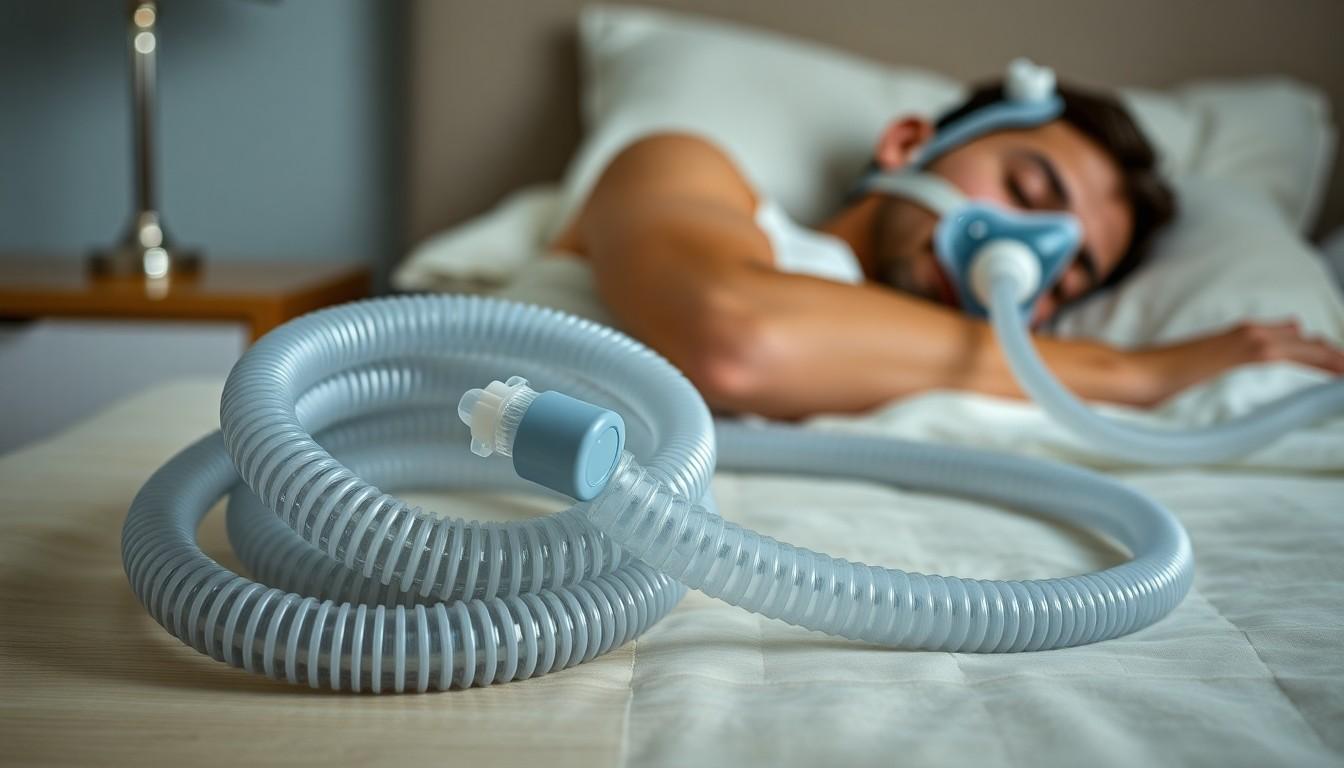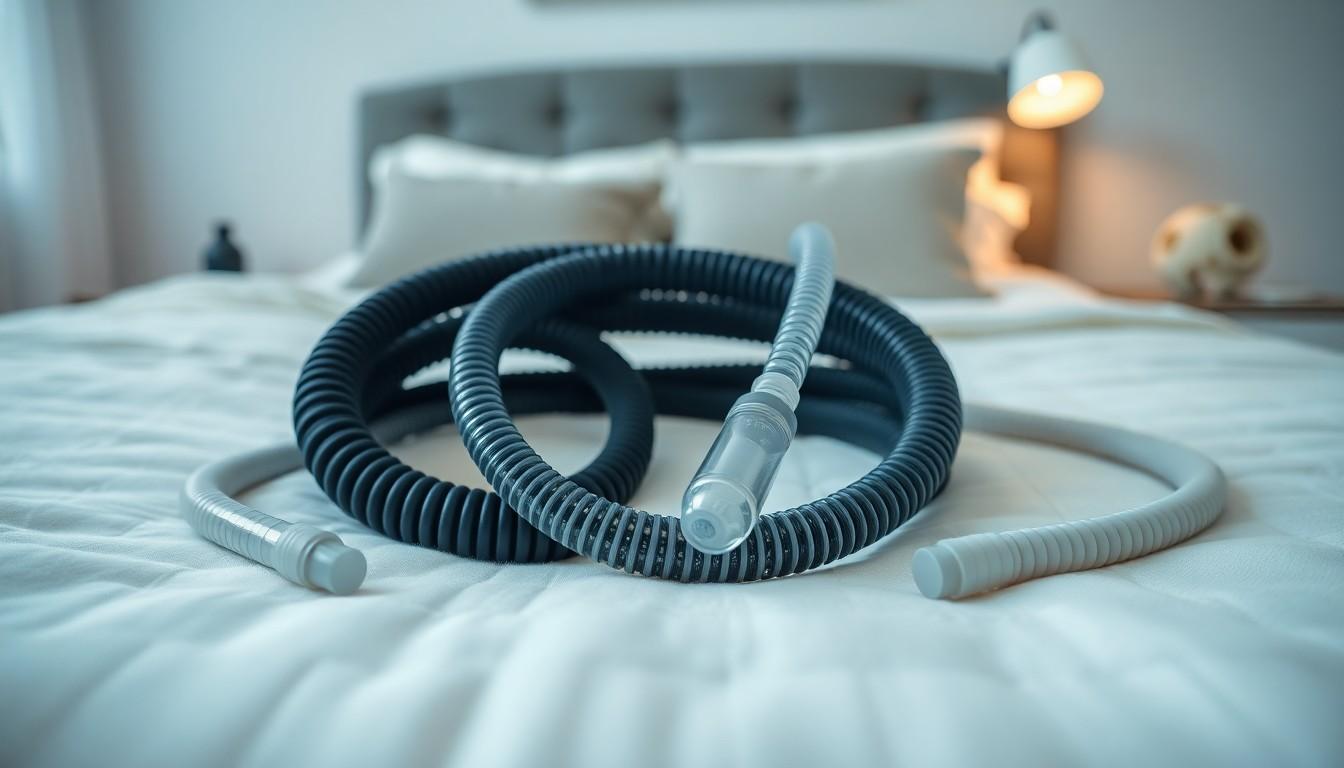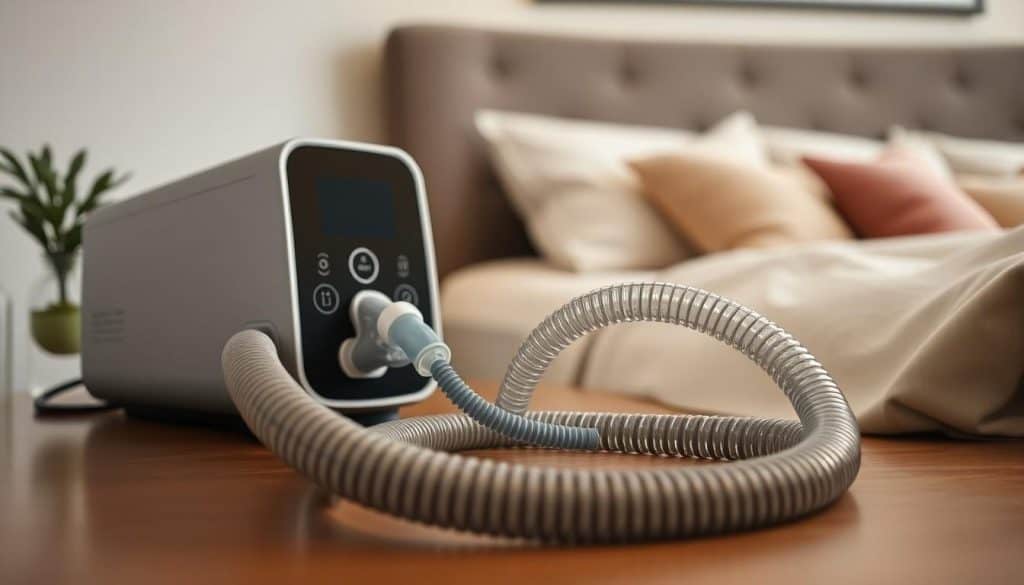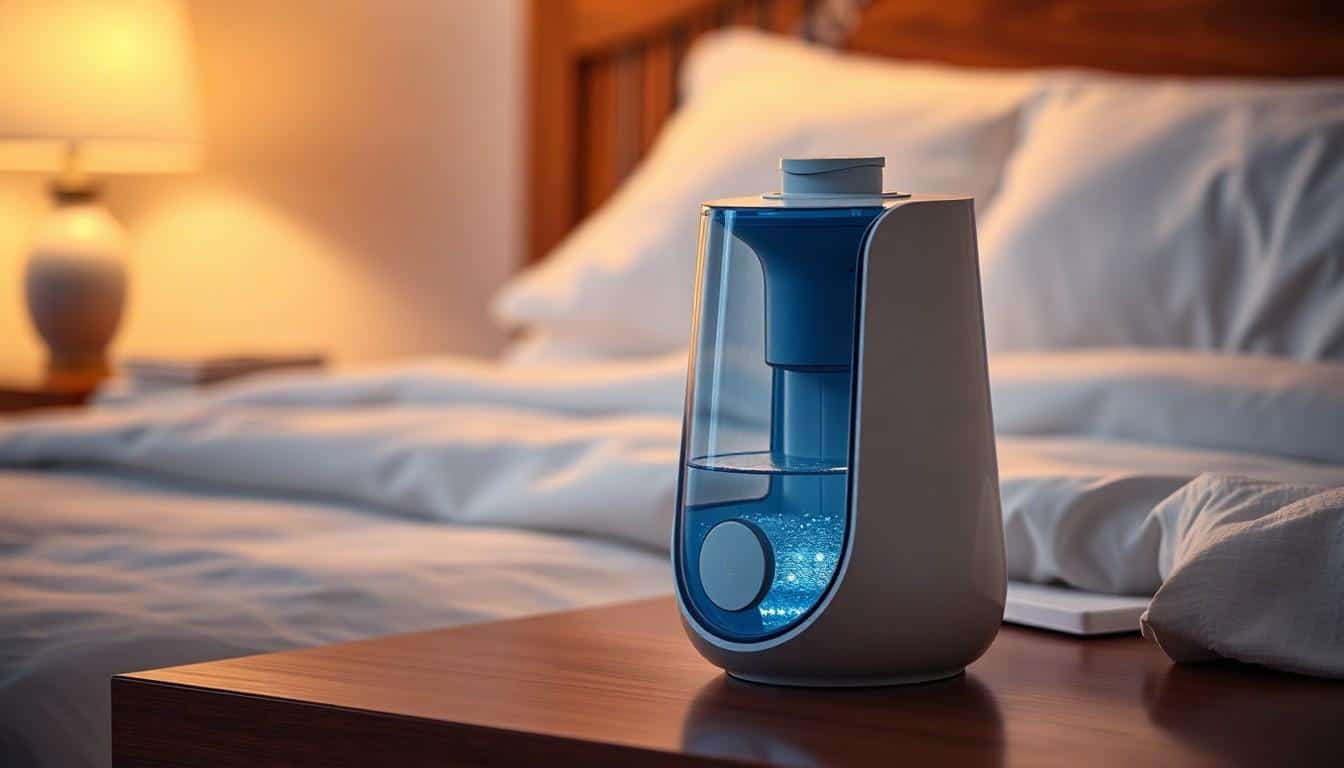Getting a good night’s sleep with your CPAP machine depends heavily on having the right hose setup. While it might seem like a simple tube, your CPAP hose plays a crucial role in delivering the precise air pressure you need for effective sleep apnea treatment.
You’ll find several types of CPAP hoses available today, from standard tubes to heated options and even ultra-lightweight designs. Each type offers unique benefits that can significantly impact your comfort and treatment effectiveness. Whether you’re dealing with condensation issues or seeking more flexibility while you sleep, understanding your CPAP hose options can make a world of difference in your therapy experience.
Key Takeaways
- CPAP hoses come in three main types: standard (19-22mm), heated, and slim (15mm) tubing, each serving different therapy needs and preferences.
- Heated CPAP hoses feature built-in heating coils that prevent condensation and “rainout” issues, making them ideal for use with humidifiers.
- The optimal CPAP hose length varies from 4-10 feet, with 6 feet being standard, allowing users to choose based on their sleeping setup and mobility needs.
- CPAP hoses should be replaced every 3-6 months, with heated tubes lasting longer than standard ones, to maintain optimal therapy performance.
- Regular maintenance, including weekly cleaning with mild soap and warm water, is essential for preventing bacteria growth and ensuring effective treatment.
Types of CPAP Hoses Available
CPAP hoses come in three distinct variations to accommodate different therapy needs. Each type offers specific features that enhance the effectiveness of CPAP therapy through improved air delivery.
Standard CPAP Tubing
Standard CPAP tubing serves as the baseline option for CPAP therapy. These tubes measure 6 feet in length with a universal 19-22mm diameter connection cuff, ensuring compatibility with most CPAP masks and machines. Alternative lengths include 4 feet, 8 feet, and 10 feet options for specific setup requirements. The standard design functions effectively with basic CPAP setups, though condensation can form when paired with humidifiers.
Heated CPAP Hoses
Heated CPAP hoses incorporate built-in heating coils throughout the tubing length. These specialized hoses connect directly to CPAP humidifiers, maintaining consistent air temperature during therapy. The heating element prevents condensation formation by keeping the air warm as it travels from the machine to the mask, eliminating the common issue of “rainout” that occurs in standard tubing.
Slim CPAP Tubing Options
Slim CPAP tubing features a reduced diameter compared to standard hoses, typically 15mm instead of the standard 19-22mm. These lightweight tubes offer increased flexibility and reduced bulk, making them ideal for side sleepers or those who move frequently during sleep. The smaller diameter maintains proper air pressure while providing enhanced mobility and comfort during use.
| Tubing Type | Standard Diameter | Key Feature |
|---|---|---|
| Standard | 19-22mm | Universal compatibility |
| Heated | 19-22mm | Built-in heating coils |
| Slim | 15mm | Reduced bulk and weight |
Key Features to Consider When Choosing a CPAP Hose

CPAP hose selection impacts the effectiveness of your sleep apnea therapy through three essential factors: length configuration, temperature management and machine compatibility.
Length and Flexibility
The ideal CPAP hose length enhances your sleeping comfort while maintaining proper airflow. Standard 6-foot hoses provide sufficient reach for typical bedside CPAP machine placement. Alternative lengths include:
- 4-foot hoses for compact spaces
- 8-foot hoses for increased mobility
- 10-foot hoses for maximum positioning flexibility
Corrugated hose surfaces increase flexibility, allowing free movement during sleep without disrupting airflow. The enhanced flexibility proves particularly beneficial for side sleepers or active sleepers who change positions frequently.
Insulation and Temperature Control
Heated CPAP hoses incorporate specialized features to regulate air temperature and prevent condensation:
- Built-in heating coils maintain consistent air warmth
- Temperature controls integrate with CPAP humidifiers
- Anti-rainout technology prevents water droplet formation
- Insulated walls preserve air temperature throughout the night
Compatibility With Your Machine
CPAP hose compatibility depends on specific connection requirements:
- Standard 19-22mm diameter fits most CPAP machines
- 15mm slim tubing works with compatible devices only
- Proprietary connectors match specific manufacturer designs
- Adapter options bridge compatibility gaps between different brands
- Seal integrity
- Air pressure maintenance
- Ease of attachment
- Overall system performance
| Hose Type | Standard Length | Common Diameter | Key Benefit |
|---|---|---|---|
| Standard | 6 feet | 19-22mm | Universal compatibility |
| Heated | 6 feet | 19-22mm | Condensation prevention |
| Slim | 6 feet | 15mm | Enhanced flexibility |
| Extended | 8-10 feet | 19-22mm | Maximum mobility |
Benefits of Upgrading Your CPAP Hose

Upgrading your CPAP hose enhances treatment effectiveness through advanced materials and design features. Modern CPAP hoses incorporate technological improvements that address common user concerns related to comfort flexibility.
Enhanced Comfort and Sleep Quality
CPAP hose upgrades provide enhanced mobility during sleep through specialized design features:
- Flexible Movement: Corrugated surface designs, like the Sunset Standard CPAP Tubing, allow natural movement without disrupting mask positioning
- Lightweight Construction: Premium materials reduce tubing weight by up to 40%, minimizing drag on CPAP masks
- Extended Range: Tubing connectors extend movement range by 2-3 feet while maintaining consistent air pressure
- Universal Compatibility: Standard 19-22mm connections fit most CPAP machines seamlessly
- Heated Tubing: Built-in heating elements maintain consistent air temperature throughout the night
- Moisture-Resistant Materials: Special coatings prevent water droplet formation inside the tubing
- Insulated Design: Double-wall construction reduces temperature fluctuations that cause condensation
- Smart Temperature Control: Automated systems adjust heating levels based on ambient conditions
| Feature Comparison | Standard Hose | Upgraded Hose |
|---|---|---|
| Weight | 8-10 oz | 4-6 oz |
| Flexibility Range | 90° | 180° |
| Condensation Protection | Basic | Advanced |
| Movement Freedom | Limited | Enhanced |
Proper Care and Maintenance

Regular maintenance of your CPAP hose protects the equipment’s functionality and ensures optimal sleep apnea therapy. A well-maintained CPAP hose delivers clean air at the right pressure while preventing bacteria growth.
Cleaning Best Practices
Clean your CPAP hose once a week using these steps:
- Disconnect the hose from the CPAP machine and mask
- Rinse the hose with warm water and mild soap
- Hang the hose vertically to air dry completely
- Avoid harsh cleaning solutions or brushes that damage the interior
For daily maintenance:
- Empty any accumulated water from the hose each morning
- Wipe the external surface with a clean, damp cloth
- Store the hose in a clean, dry place away from direct sunlight
When to Replace Your CPAP Hose
Replace your CPAP hose every 3-6 months to maintain optimal performance. Signs indicating immediate replacement include:
Physical damage:
- Visible cracks or tears
- Worn-out connection points
- Discoloration or cloudiness
- Permanent kinks or bends
Performance issues:
- Reduced airflow
- Unusual noises during operation
- Persistent odors even though cleaning
- Frequent mask leaks
- Inspect connections weekly for secure fit
- Check for water damage after each cleaning
- Note any changes in sleep quality or therapy effectiveness
- Track the installation date to plan timely replacements
| Hose Type | Replacement Schedule |
|---|---|
| Standard | Every 3 months |
| Heated | Every 6 months |
| Slim | Every 3 months |
Top CPAP Hose Recommendations

CPAP hoses come in various configurations to match specific therapy needs. The right hose enhances comfort while maintaining optimal air pressure delivery throughout the night.
Standard CPAP Hoses
The Sunset Standard CPAP Tubing offers versatile length options of 4, 6 or 8 feet with a 19-millimeter diameter. Its corrugated surface provides flexibility for active sleepers while maintaining compatibility with most CPAP machines.
Premium Heated Options
The ResMed ClimateLineAir™ Heated Tubing integrates seamlessly with ResMed AirSense™ and AirCurve™ devices. Its built-in heating element maintains consistent air temperature to eliminate condensation issues, particularly beneficial when using a humidifier.
Antimicrobial Solutions
The LiViliti Healthy Hose Pro features antimicrobial properties that eliminate 99.99% of bacteria. This specialized tubing creates a more hygienic therapy environment by preventing bacterial growth inside the hose.
- Standard 6-foot corrugated tubes compatible with most machines
- Basic slim-line options for enhanced flexibility
- Universal connectors that fit standard mask ports
- Non-heated alternatives suitable for moderate climates
| Hose Type | Key Feature | Best For |
|---|---|---|
| Standard | Universal compatibility | General use |
| Heated | Temperature control | Humid environments |
| Antimicrobial | Germ resistance | Health-conscious users |
| Generic | Cost effectiveness | Budget considerations |
Conclusion
Choosing the right CPAP equipment, especially the CPAP hose, can significantly enhance your sleep apnea therapy experience. Whether you opt for a standard heated or slim tubing the key is finding one that matches your sleeping style and comfort needs.
Remember to maintain your hose properly with regular cleaning and timely replacements. This ensures optimal performance and hygiene for your CPAP therapy. With the variety of options available today you’ll find a CPAP hose that perfectly fits your lifestyle while delivering the consistent airflow you need for restful sleep.
Taking time to evaluate your specific requirements and considering factors like length flexibility and temperature control will lead you to the ideal CPAP hose choice for effective treatment.
Frequently Asked Questions
What are the different types of CPAP hoses available?
There are three main types of CPAP hoses: standard, heated, and ultra-lightweight. Standard hoses are 6 feet long with universal connections, heated hoses have built-in warming coils to prevent condensation, and ultra-lightweight hoses feature a slimmer 15mm diameter for enhanced flexibility.
How often should I replace my CPAP hose?
CPAP hoses should be replaced every 3-6 months, depending on usage and type. Regular replacement ensures optimal performance and maintains proper hygiene. Look for signs of wear, damage, or reduced effectiveness as indicators for replacement.
How do I clean my CPAP hose properly?
Clean your CPAP hose weekly using warm water and mild soap. After cleaning, rinse thoroughly and air dry completely. Perform daily maintenance by emptying any accumulated water and wiping the exterior. Never use harsh chemicals or cleaning methods that could damage the hose.
What’s the benefit of using a heated CPAP hose?
Heated CPAP hoses prevent condensation (rainout) and maintain consistent air temperature throughout the night. This improves comfort, reduces water accumulation, and helps ensure uninterrupted therapy by preventing moisture-related issues.
Can I use any CPAP hose with my machine?
Not all CPAP hoses are universally compatible. Check your machine’s requirements for proper diameter (19-22mm for standard, 15mm for slim) and connection types. Some machines may require proprietary connectors or specific hose designs for optimal performance.
What’s the ideal CPAP hose length?
The standard 6-foot length works for most users, but options range from 4 to 10 feet. Choose based on your bedroom setup and sleeping habits. Shorter hoses (4 feet) work well in compact spaces, while longer ones (8-10 feet) offer more mobility.



